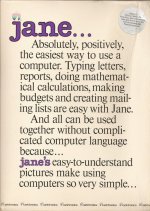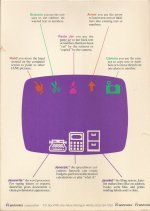jconger
Experienced Member


I found this box with my Apple //e. It has the Jane software and a proprietary mouse. I think I remember my neighbor and I getting Jane as a special deal at Microcenter in Columbus, Ohio.
It has 3 5.25" floppies, including one labeled "Jane Data". I remember using it and being impressed that they could do a GUI on an Apple //e, but AppleWorks was already my workhorse, so I wasn't very interested. I think it might have been copy protected.
Did anyone else ever use Jane? Was my special deal likely to be the close out for the company's products as it went out of business? Google only found me some references to "Jane 128" for the Commodore 128.
Jim
